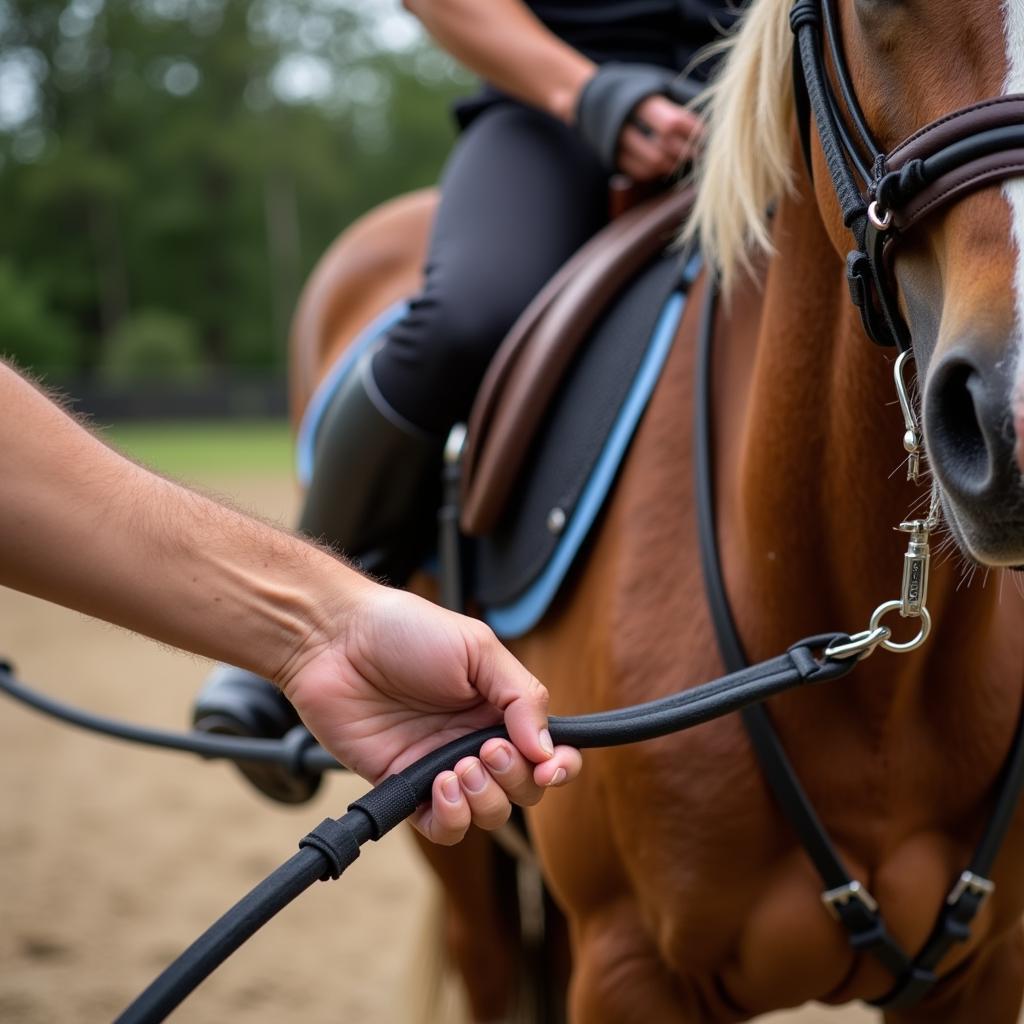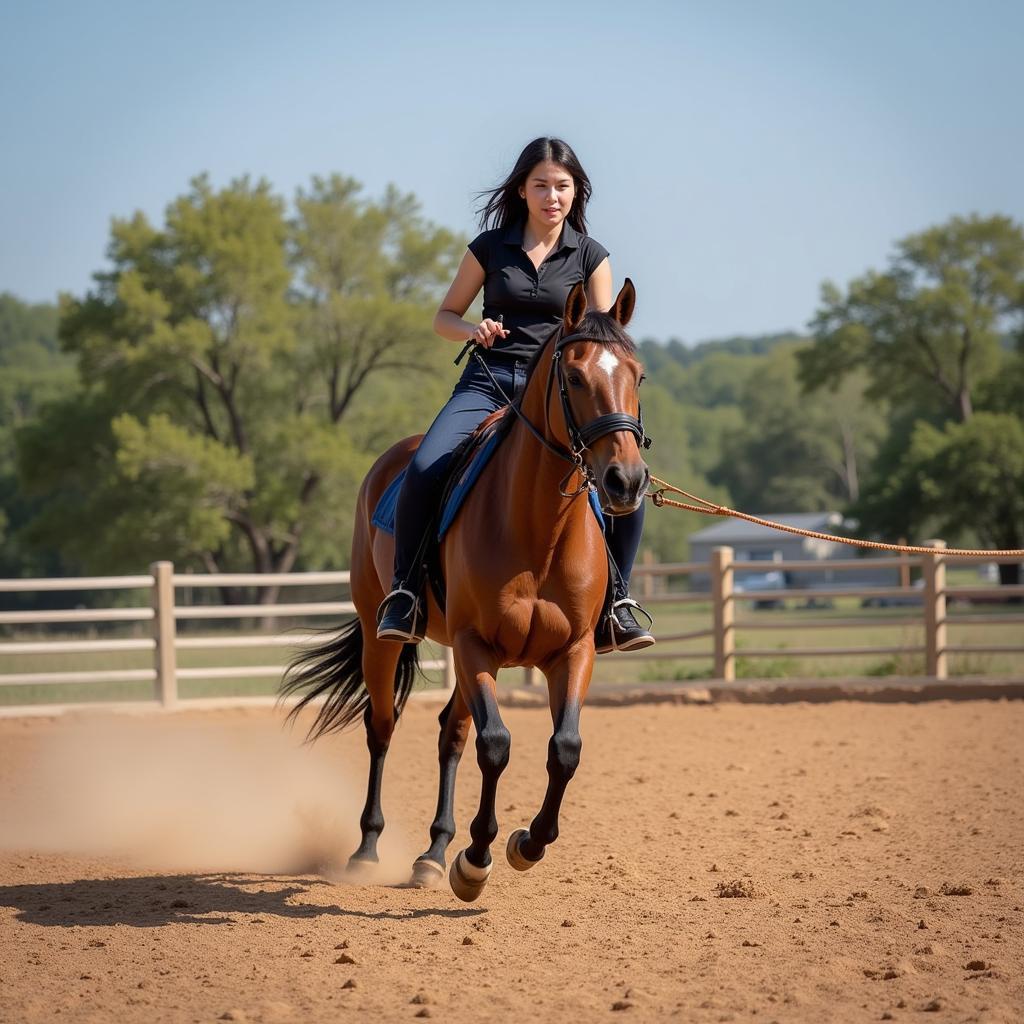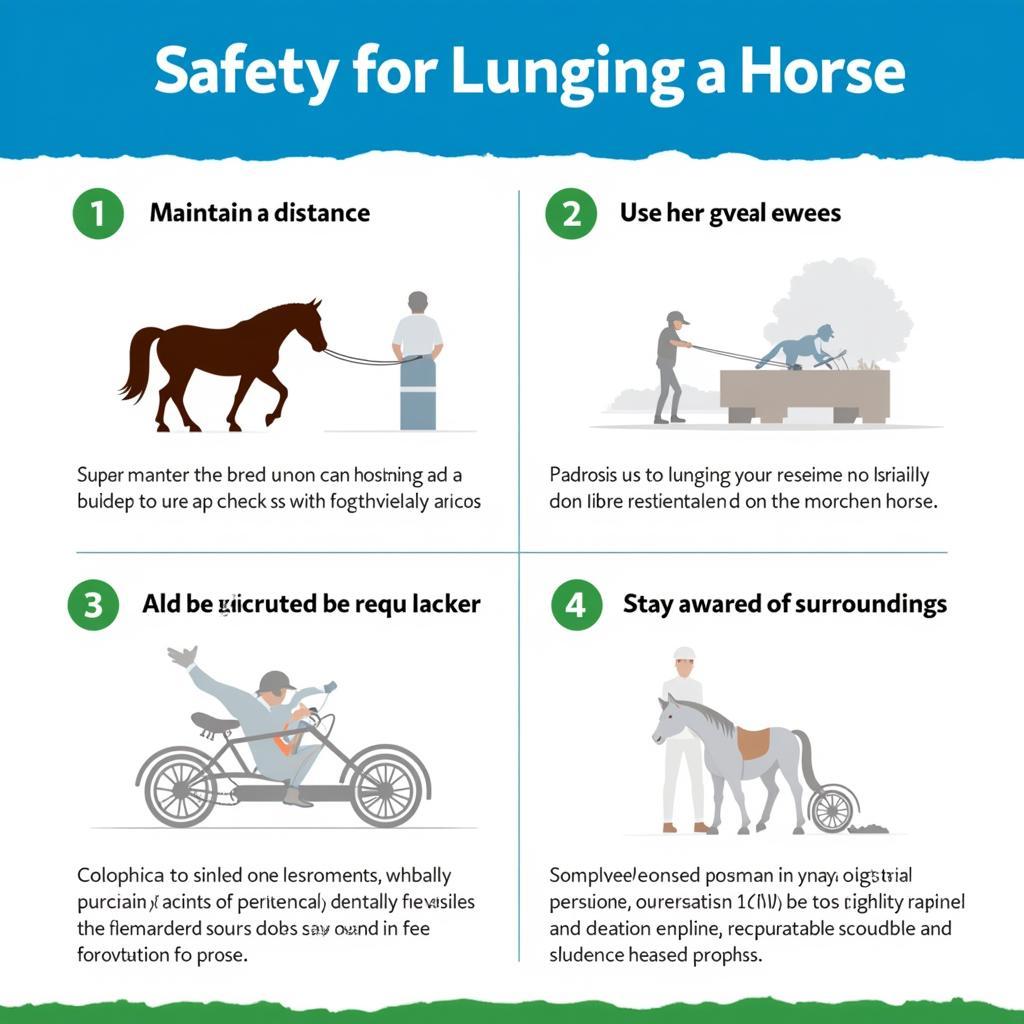The Horse Lunge Line: a seemingly simple piece of equipment, yet crucial for training, exercise, and building a strong bond with your equine partner. Whether you’re a seasoned equestrian or a novice horse owner, understanding how to use a lunge line properly is essential for both your safety and the well-being of your horse.
 Horse Lunge Line Training
Horse Lunge Line Training
What is a Horse Lunge Line?
A lunge line, also known as a lunge rein, is a long rope, typically made of cotton, nylon, or webbing, that is attached to a lunge cavesson or halter worn by the horse. It provides a physical connection between the handler and the horse, allowing for controlled movement and communication from the ground.
The Purpose of Lunging a Horse
Lunging serves a multitude of purposes, including:
- Training: Introduce young horses to basic cues, voice commands, and the feeling of a bit.
- Exercise: Provide a controlled workout to improve muscle tone, flexibility, and cardiovascular health.
- Warm-up/Cool-down: Prepare the horse for ridden work or help them relax and stretch after a ride.
- Rehabilitation: Aid in recovery from injury by allowing for controlled movement and muscle strengthening.
- Evaluation: Observe a horse’s gait, soundness, and temperament from the ground.
 Lunge Line for Horse Exercise
Lunge Line for Horse Exercise
Choosing the Right Lunge Line
Selecting the appropriate lunge line is crucial for safety and effectiveness. Consider the following factors:
- Material: Cotton is softer on the hands, while nylon is more durable.
- Length: Standard lengths range from 25 to 35 feet. Choose a length that allows for adequate space and control.
- Diameter: Thicker lines offer better grip and control, especially for larger horses.
- Features: Some lines come with features like chains, swivels, and loops for added functionality.
Essential Lunge Line Equipment
Beyond the lunge line itself, you’ll need a few additional pieces of equipment:
- Lunge Cavesson or Halter: A lunge cavesson is specifically designed for lunging and provides optimal control and pressure points.
- Lunge Whip: Used for cues and encouragement, not for hitting the horse.
- Protective Boots: Protect your horse’s legs from potential strikes from the lunge line or their own hooves.
How to Lunge a Horse Safely and Effectively
Lunging a horse is a skill that requires practice and patience. Here’s a step-by-step guide:
- Prepare Your Horse: Groom your horse and outfit them with the lunge cavesson, lunge line, and protective boots.
- Find a Safe Area: Choose a level, enclosed space free of obstacles.
- Establish Communication: Use clear voice commands and body language to direct your horse.
- Maintain Distance: Stand in the center of the circle and keep a safe distance from your horse.
- Control the Pace: Use the lunge whip and your body position to influence your horse’s speed and gait.
- Focus on Consistency: Be consistent with your cues and expectations.
- End on a Positive Note: Finish the session with a calm walk and reward your horse with praise and a pat.
 Horse Lunge Line Safety
Horse Lunge Line Safety
“Remember,” says renowned equine veterinarian Dr. Emily Carter, “lunging should be a positive and productive experience for both horse and handler. Patience, clear communication, and a focus on safety are paramount.”
Conclusion
The horse lunge line is a valuable tool for any horse owner. By understanding its purpose, choosing the right equipment, and following proper lunging techniques, you can enhance your horse’s training, fitness, and overall well-being.
For more information on specific lunging exercises and techniques, check out our article on lunging a horse exercises.
FAQs
1. How often should I lunge my horse?
Lunging can be beneficial 1-2 times per week, but the frequency depends on your horse’s age, fitness level, and training goals.
2. Can I use a lunge line on a young foal?
It’s best to wait until a foal is at least a year old before introducing them to a lunge line.
3. What should I do if my horse won’t move forward on the lunge line?
Use gentle encouragement with the lunge whip and your voice. Avoid chasing the horse, as this can create a stressful experience.
4. Is lunging a suitable replacement for riding?
While lunging offers excellent exercise, it shouldn’t replace ridden work entirely. Riding allows for a deeper level of training and communication.
5. What are some common mistakes to avoid when lunging?
- Lunging in a small circle.
- Using harsh or inconsistent cues.
- Letting the lunge line drag on the ground.
- Forgetting to change directions.
- Lunging for too long.
Need further assistance with your horse care or have more questions about lunging? Contact us today at Phone Number: 0772127271, Email: [email protected] or visit our location at QGM2+WX2, Vị Trung, Vị Thuỷ, Hậu Giang, Việt Nam. Our dedicated customer support team is available 24/7 to help you and your equine companion. We also encourage you to learn more about selecting the best lunge line for horses on our website.